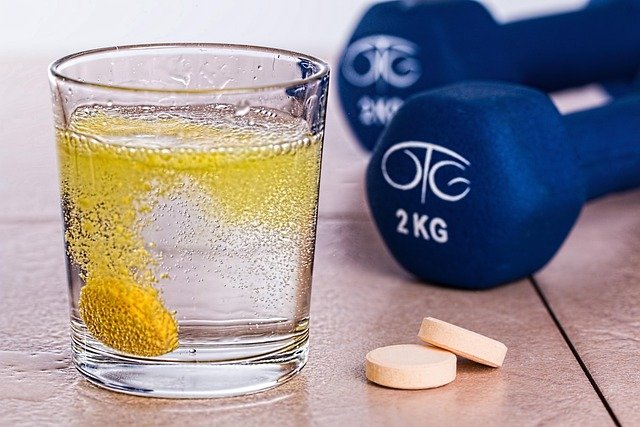Meal Patterns and Training Windows That Support Skin Turnover
Understanding how meal timing and training windows interact with skin turnover can help you structure daily routines that support repair and resilience. This article outlines practical meal patterns, training timing, and lifestyle factors—nutrition, hydration, sleep, supplements, and recovery—that influence epidermal renewal and collagen maintenance.

Skin is a dynamic organ that continually sheds and renews its outer layer. Meal timing, exercise scheduling, and recovery routines all influence cellular metabolism, inflammation, and the availability of nutrients that support skin turnover. Integrating consistent nutrition, targeted supplements, proper hydration, restorative sleep, and mindful exercise windows can create an environment that supports collagen synthesis, antioxidant defenses, and efficient epidermal repair. Below are evidence-informed strategies to align eating and training with skin renewal processes.
How does nutrition influence skin turnover and collagen
Nutrition supplies amino acids, fatty acids, vitamins, and minerals that are the raw materials for skin structure and function. Protein intake provides collagen-building amino acids like glycine, proline, and lysine; vitamin C is essential for the enzymatic steps that stabilize collagen; and essential fatty acids support barrier integrity. Antioxidants from fruits and vegetables reduce oxidative stress that can accelerate turnover dysfunction. Eating regular, balanced meals that include lean protein, colorful produce, healthy fats, and whole grains helps maintain steady nutrient delivery for epidermal and dermal repair.
When should meals be timed to support repair and metabolism
Meal patterns that avoid large glycemic swings may reduce systemic inflammation and oxidative stress, both of which influence skin health. Consistent protein at meals—morning, midday, and evening—supports ongoing collagen synthesis. Some people find that spacing meals to allow 3–5 hours between sizable nutrition intakes stabilizes metabolism and recovery. For those practicing time-restricted eating, aligning the eating window to allow an adequate pre-sleep protein-rich snack can supply amino acids during overnight repair without disrupting sleep, but individual responses vary.
How do training windows affect skin recovery and inflammation
Exercise triggers transient inflammation that, when well-managed, stimulates repair and remodeling. Resistance training supports collagen turnover by increasing localized growth signals and blood flow; endurance training improves circulation and waste clearance. Scheduling higher-intensity or resistance sessions earlier in the day can capitalize on post-exercise nutrient intake and daytime hormonal profiles; lighter mobility, flexibility, or restorative sessions in the evening can promote relaxation and recovery. Allowing 24–48 hours between intense sessions for the same area reduces chronic inflammation and supports healthy turnover.
What role do supplements, hydration, and antioxidants play in routines
Supplements can complement—but not replace—whole foods. Evidence-backed options include vitamin C for collagen cross-linking, omega-3 fatty acids for barrier and inflammatory modulation, and zinc for wound healing. Collagen peptides may increase circulating amino acids that feed synthesis, while antioxidants such as vitamin E and polyphenols help limit oxidative damage. Adequate hydration supports skin turgor and nutrient transport; aim for regular water intake across the day. Discuss supplements with a healthcare professional before starting them.
How sleep, mindfulness, and recovery support epidermal renewal
Sleep is a critical window for repair: nocturnal hormonal patterns (growth hormone, melatonin) and lowered cortisol foster tissue repair and cell proliferation. Prioritizing consistent sleep schedules and creating a calming pre-sleep routine lowers stress-driven inflammation that can disrupt turnover. Mindfulness and stress-management techniques reduce chronic inflammatory signaling and may improve skin resilience. Combine restorative sleep with a cooling, low-stimulation environment and consider light evening movement or gentle stretching to ease into sleep.
How to balance strength, flexibility, and rest to reduce inflammation
A balanced program includes strength work to encourage collagen remodeling, flexibility and mobility to maintain tissue quality, and dedicated recovery days to prevent overuse. Progressive resistance supports structural adaptations in connective tissue; mobility sessions help maintain nutrient flow and reduce localized stiffness. Track subjective recovery and local soreness rather than forcing daily high intensity. Periodizing training—alternating intensity and focus across weeks—helps control inflammation and supports steady skin turnover.
This article is for informational purposes only and should not be considered medical advice. Please consult a qualified healthcare professional for personalized guidance and treatment.
In conclusion, aligning meal patterns, training windows, and recovery habits creates a supportive environment for skin turnover. Prioritize protein distribution, antioxidant-rich foods, appropriate supplement use when indicated, consistent hydration, quality sleep, and a balanced training plan that alternates intensity and recovery. Small, consistent adjustments to when you eat and exercise can complement broader skincare routines and long-term tissue health.





